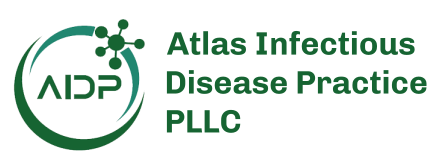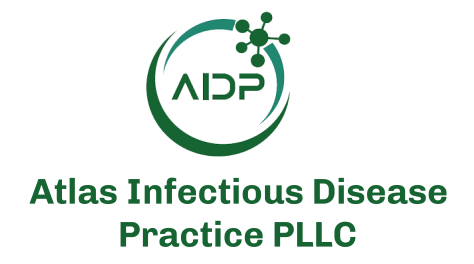
Today, the World Health Organization (WHO) announced it had published 2 reports regarding therapies and diagnostics for fungal diseases. The reports were designed to address the gaps in testing and treatments, especially in low- and middle-income countries (LMICs).
“Invasive fungal infections threaten the lives of the most vulnerable but countries lack the treatments needed to save lives,” Yukiko Nakatani, MD, PhD, WHO assistant director-general for Antimicrobial Resistance ad interim said in a statement. “Not only is the pipeline of new antifungal drugs and diagnostics insufficient, there is a void in fungal testing in low- and middle-income countries, even in district hospitals. This diagnostic gap means the cause of people’s suffering remains unknown, making it difficult to get them the right treatments.” 1
What is especially troubling are the mortality rates, which can reach as high as 88% for fungi in the top ‘critical priority’ category of the WHO’s fungal priority pathogens list (FPPL). Advancements in treatments mean that more people are likely to be living with immunocompromised conditions, which also could mean increases in cases of invasive fungal diseases. This is a complex challenge to manage due to inaccessibility of diagnostic tools, limited availability of antifungal medicines, and a slow and complex research and development process for new treatments, the authors pointed out.1
Fungal Therapies
Antimicrobial resistance remains one of the biggest, ongoing challenges for therapies for certain fungal infections. For example, when looking at Candida auris, first-line therapies are often less susceptible. About 90% of C auris isolates have been resistant to fluconazole, about 30% have been resistant to amphotericin B, and less than 2% have been resistant to echinocandins, according to the Centers for Disease Control and Prevention (CDC).2
The WHO’s therapies report is titled, Antifungal Agents in Clinical and Preclinical Development, and in it, the authors point out a lack of newly approved antifungals as well as a limited late-stage development pipeline. They write that in the past decade, only 4 new antifungal drugs have been approved by regulatory authorities in the US, European Union, or China.1
What You Need to Know
The WHO highlights significant gaps in the availability of antifungal drugs and diagnostic tools, particularly in low- and middle-income countries (LMICs).
Resistance to first-line antifungal therapies, such as fluconazole for Candida auris, poses a growing challenge.
The WHO calls for increased global surveillance, financial incentives for drug discovery, and expanded research into new antifungal targets.
There are 9 antifungals in clinical development to use against the most health-threatening fungi, but only 3 candidates are in phase 3. Twenty-two drugs are in preclinical development, an insufficient number to feed a clinical pipeline considering the dropout rates, risks and challenges associated with earlier development stages. 1
In addition to resistance and limited treatment options, the authors also highlight several other issues with antifungals, including serious side effects, frequent drug-drug interactions, limited dosage forms, and the need for prolonged hospital stays. The authors argue that there is a need for safer antifungal options, which could potentially reduce the need for continuous drug monitoring.¹
Regarding recommendations, the WHO emphasizes the importance of investments in global surveillance, expanding financial incentives for drug discovery and development, funding basic research to identify new and unexploited fungal targets for therapies, and investigating treatments that enhance patients’ immune responses. These efforts are all essential when considering antifungal therapies.¹
Fungal Diagnostics
The diagnostics report is titled, Landscape Analysis of Commercially Available and Pipeline in Vitro Diagnostics for Fungal Priority Pathogens. The authors point out that although there are commercially available tests for fungal priority pathogens, in (LMICs), there is limited testing availability. They point out that all these countries need faster, more accurate, cheaper and easier testing for a broad range of fungal priority pathogens, but that LMICs are particularly challenged in getting diagnostics that can be used at or near point-of-care.¹
Additionally, other areas that need to be addressed include the limited capabilities of fungi diagnostics, and the lengthy time to obtain testing results. Most of the tests are not well suited to primary and secondary health facilities as certain diagnostics require stable electricity supplies within suitable and equipped laboratories.¹
And health workers often have insufficient knowledge about fungal infections as well as the impact of fungi growing more resistant to treatments, resulting in limited ability to perform the testing needed to determine the appropriate treatment they point out.¹
References
1.WHO issues its first-ever reports on tests and treatments for fungal infections. WHO press release. April 1, 2025. Accessed April 1, 2025.
https://www.who.int/news/item/01-04-2025-who-issues-its-first-ever-reports-on-tests-and-treatments-for-fungal-infections
2. Antifungal Susceptibility Testing for C. auris. CDC. April 24, 2024. Accessed April 1, 2025.
https://www.cdc.gov/candida-auris/hcp/laboratories/antifungal-susceptibility-testing.html






